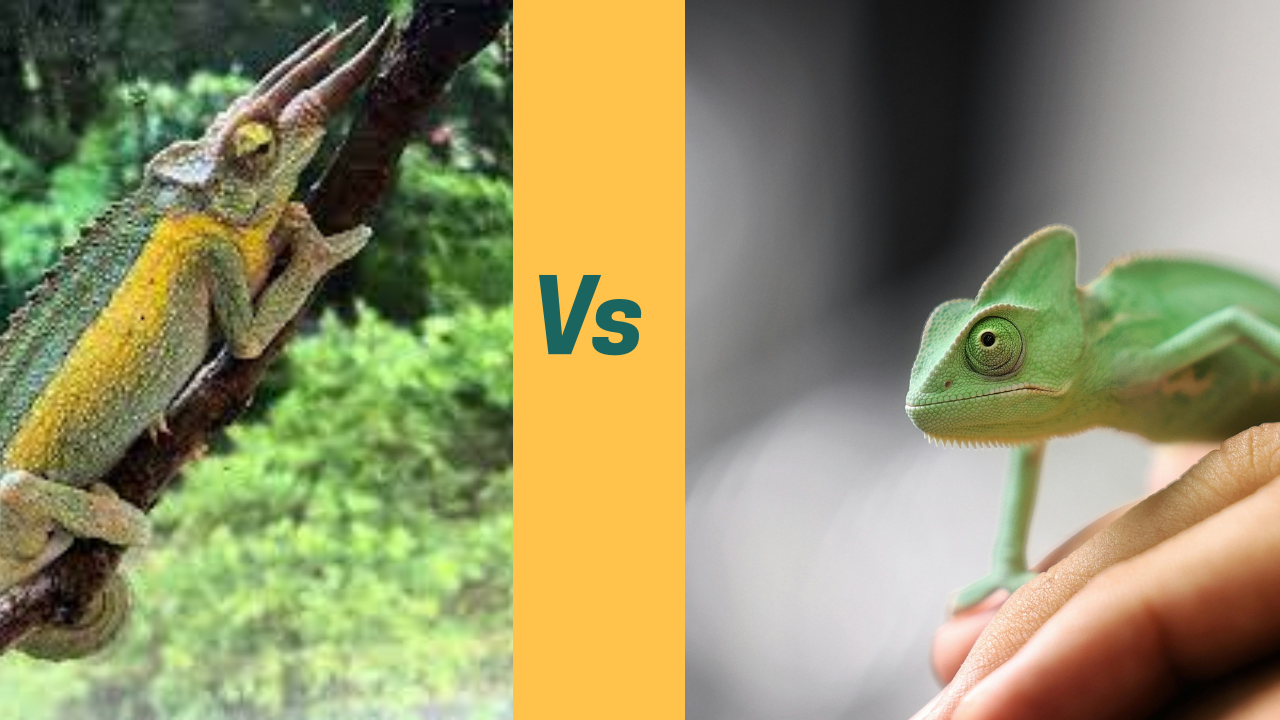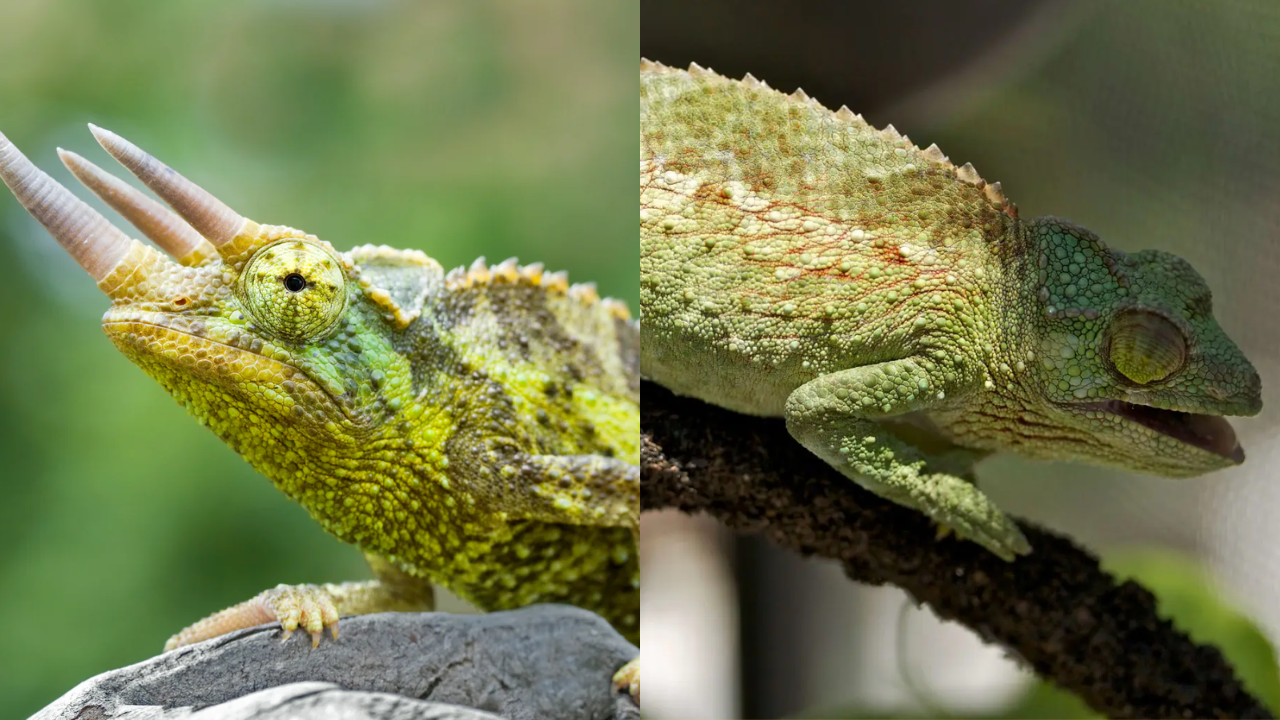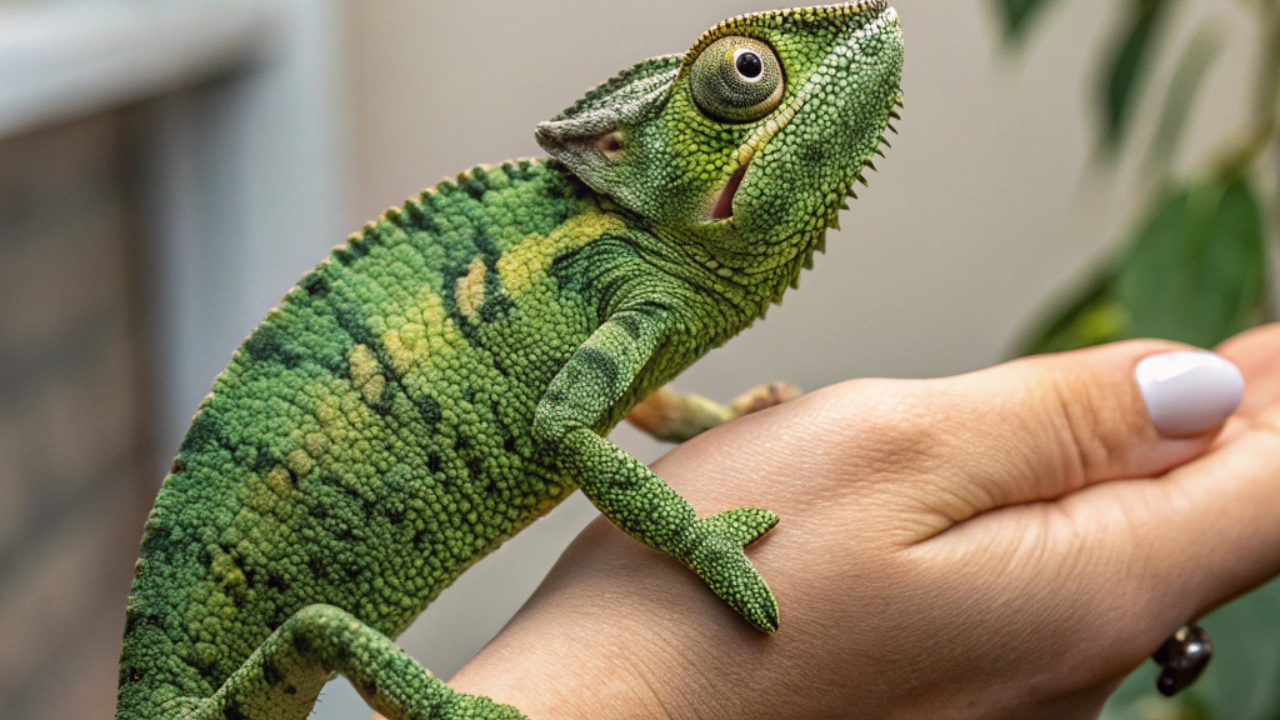Complete Jackson’s Chameleon Care Guide: Habitat, Diet, Lighting, and More
Posted by TopFlight Dubia on Apr 4th 2024
Complete Jackson’s Chameleon Care Guide by TopFlight Dubia
“Not flaunting that my chameleon is the best, but you will fall in with him if you ever see him changing colors.”
Interesting right? If you are fascinated by these color-changing, horned wonders, you’re in the right place!
Jackson chameleons are not your normal pets—these little creatures are full of personality and charm. From their vibrant colors to their unique horns, they’re one of a kind and will bring a lot of fun to your home.
Whether you’re a beginner chameleon or a seasoned owner, here we’ll tell you the complete process of caring for your little friend so that it feels safe and comfortable at home.
How to Create the Perfect Home for Your Jackson’s Chameleon?
Just like humans make their homes comfortable, you must create the right habitat for your Jackson Chameleon. You'll ensure your chameleon thrives in its new environment with proper enclosure, temperature, humidity, and light.
- What Size Enclosure Does My Jackson Chameleon Need?
Your Jackson chameleon needs enough space to climb and explore. So, for adults, you should choose a cage that’s at least 18” x 18” x 36”. This size gives them the freedom to move around comfortably. Use a mesh or wire cage for better airflow, and add climbing branches and plants for them to enjoy.
- How to Maintain the Right Temperature and Humidity?
Getting them cage is not enough; you must maintain a specific temperature and humidity to make them feel homely.
- Temperature:
When it comes to maintaining temperature, remember that during the day, keep the temperature between 70°F and 80°F. Provide a basking spot at 85°F. At night, let the temperature drop to 65°F to 70°F.
- Humidity:
Now, maintain humidity levels between 60% and 80%. Mist the cage daily or use an automatic misting system to maintain these levels. Proper humidity helps keep your chameleon hydrated and promotes healthy skin shedding.
- What Type of Lighting Does a Jackson’s Chameleon Need?
- UVB Lighting: You can use a UVB bulb 10-12 hours daily. This helps them absorb calcium and stay healthy.
- UVA Lighting: UVA bulbs keep them active and regulate their natural day-night cycle.
|
Tip: Replace UVB bulbs every 6 months for the best results. |
3. What Should I Feed My Jackson’s Chameleon?

Best Diet for a Jackson’s Chameleon?
Regarding diet, your Jackson chameleon is an insectivore, meaning they only eats insects. Here is the best diet you can give them:
- Dubia Roaches and cricket should be their major diet
- You can occasionally offer waxworms and superworms.
- Fruits and vegetables like apples, peapods, and greens (e.g., collard greens) can be given as supplements.
Food to avoid:

- Spinach – High oxalate levels, which can bind calcium and cause issues.
- Lettuce – It has low nutritional value and can cause diarrhea.
- Cabbage – May interfere with iodine absorption and cause thyroid problems.
|
Insects from the Wild: Never feed insects caught in your backyard, as they may carry pesticides, parasites, or bacteria harmful to your chameleon. |
- How Often Should I Feed My Jackson’s Chameleon?
When it comes to feeding your three-horned Jackson Chameleon, it varies based on their age group.
|
Age Group |
Feeding Frequency |
Insect Size |
|
Baby (1-3 months) |
2-3 times a day |
Small insects no larger than their head |
|
Juvenile (4-6 months) |
Once or twice a day |
Medium insects no larger than their head |
|
Adults (7 months and older) |
Once a day (with occasional fasting days) |
Larger insects, but still no bigger than their head width |
- Do I Need to Supplement My Chameleon’s Diet?
Yes, you can add supplements to your Chameleon’s diet, including vitamins and calcium.
4. How Can I Provide Water for My Jackson’s Chameleon?
Misting the Enclosure: Let the Rain Fall Indoors!
- You can mist the plants and branches 2-3 times daily to create droplets your chameleon can drink from.
Maintaining High Humidity: Keep the Air Moist and Fresh
- Maintain the humidity levels between 60%-80% to help with hydration and support natural drinking behavior.
Drip System: The Perfect Way to Drip, Drop, and Hydrate
- You can set up a drip system that slowly releases water onto plants, letting your chameleon drink from the droplets.
Fogger: A Cloud of Freshness for Your Chameleon
- Use a fogger to create a misty environment, raising humidity and providing additional water droplets to drink.
Leaf Watering: Nature’s Own Hydration Station
- Mist leafy plants, allowing your chameleon to drink directly from the leaves, just like in the wild.
Water Drops on Branches: A Refreshing Treat, Right Where They Climb
- Place water droplets on branches or leaves to let your chameleon lick and stay hydrated throughout the day.
How Does Jackson’s Chameleon Care Differ from Other Chameleons?

|
Aspect |
Jackson’s Chameleon |
Veiled Chameleon |
Panther Chameleon |
|
Size |
Smaller (up to 13 inches) |
Medium (up to 24 inches) |
Medium (up to 20 inches) |
|
Coloration |
Green, with bright colors when stressed or mating |
Bright green with yellow, blue, or orange hues |
Highly colorful, with vibrant blue, red, and green |
|
Behavior |
Territorial, more aggressive in males |
Less territorial, more calm |
Generally calm but can be territorial |
|
Diet |
Insectivores (crickets, Dubia roaches, waxworms, some fruits) |
Insectivores, sometimes fruits like papaya or mango |
Insectivores, fruits (mango, berries) occasionally |
|
Habitat |
Tree-dwelling, needs vertical space |
Arboreal, needs both vertical and horizontal space |
Arboreal, needs large cages with branches for climbing |
|
Breeding |
Live birth (8-30 offspring per litter) |
Egg-layers (up to 40 eggs per clutch) |
Egg-layers (up to 40 eggs per clutch) |
What are the differences between male and female caring for Jackson’s Chameleons?

|
Category |
Male Jackson’s Chameleon |
Female Jackson’s Chameleon |
|
Physical Differences |
Larger in size (up to 12 inches), pronounced horns. |
Smaller in size (up to 9 inches), minimal or no horns. |
|
Behavioral Differences |
More territorial, aggressive, and active. Displays vibrant colors, especially when competing for mates or warding off rivals. |
More passive, less territorial, and less vibrant in color. |
|
Care Needs |
- Larger nutritional needs due to size and activity. - Requires more space for territorial behavior. |
- Needs calcium support when gravid. - Can be housed in pairs or small groups with careful observation. |
|
Feeding |
It requires a balanced diet and higher food intake due to size. |
Similar diet needs, but more calcium when gravid. |
|
Housing |
Requires more space, especially if kept with other males. |
Can be housed with other females, but care must be taken to avoid conflicts. |
|
Breeding Considerations |
Displays courting behavior through color and horn movement. |
Gravid females require a suitable substrate for egg-laying. Can experience stress during egg-laying. |
How Can I Bond with My Jackson’s Chameleon?

Unlike other pets, handling Jackson Chameleopn is a different experience.. Though they don’t seek affection like other pets, they can recognize their owner and appreciate gentle interactions.
- Gentle Handling: Limit handling to short periods to reduce stress.
- Observation: Spend time watching them without disturbing them.
- Hand-Feeding: Feed them from your hand to build trust.
- Climbing Interaction: Let them climb onto your hand at their own pace.
- Treats: Offer occasional treats to create positive associations.
Conclusion:
Now you know that caring for Jackson’s Chameleons is a beautiful experience requiring attention to detail and patience. Providing the right environment, diet, and gentle handling ensures your chameleon enjoys a healthy and stress-free life. Their unique personalities and vibrant colors make them fascinating companions, and with proper care, they will bring joy to your home for years.

